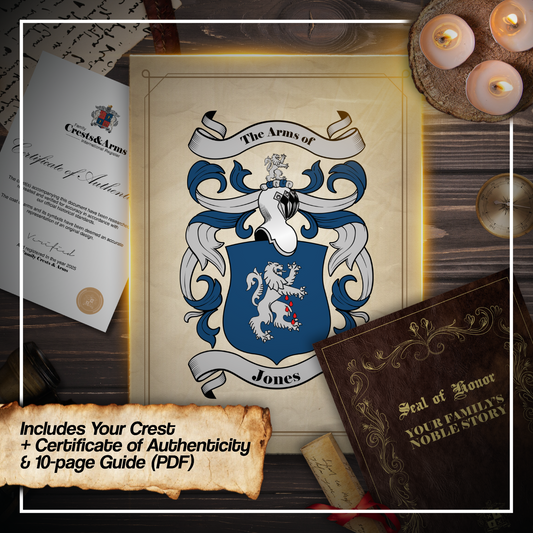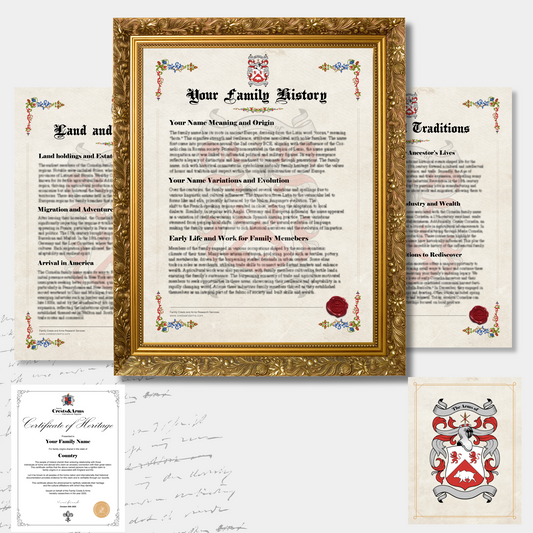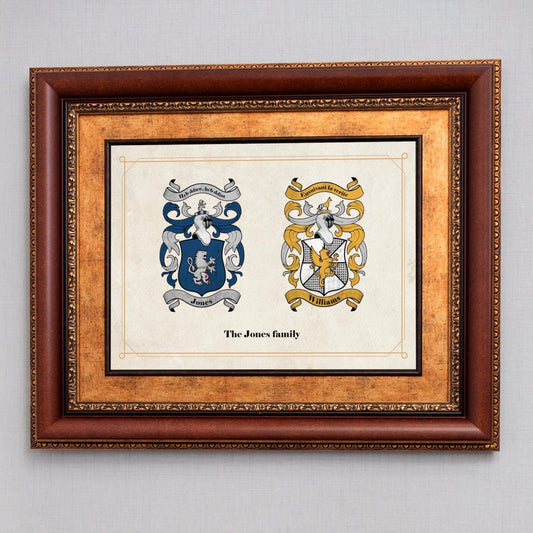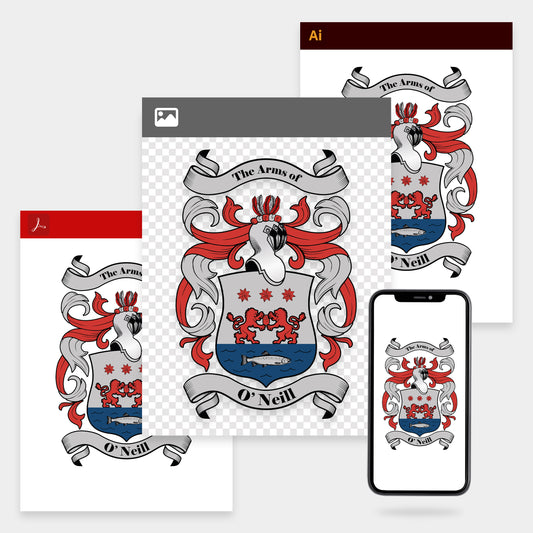Coat of Arms of Germany - An Incredible Tale of History

The coat of arms of Germany, referred to as the "Bundesadler" or the Federal Eagle, stands as a timeless emblem that narrates Germany's multifaceted and tumultuous history.
The Bundesadler, depicted as a black eagle with red talons and beak on a golden field, symbolizes values such as strength, unity, freedom, and resilience.
Origins of the Eagle: Roman Roots and Early German History
The eagle, as a symbol, has deep-seated connections with the German lands, tracing its roots back to the time of the Roman Empire.
The Romans adopted the Aquila, an eagle standard, for their legions, symbolizing power and strength.
Germanic tribes that interacted with Romans became influenced by these symbols, leading to the eventual adoption of the eagle as a significant emblem in the emerging Germanic states.
The Holy Roman Empire and the Coat of Arms of Germany
In the 9th century, the Holy Roman Empire, an assembly of territories in Central Europe, embraced the single-headed eagle. The eagle's association with strength, watchfulness, and a supreme authority aligned perfectly with the ambitions of the Holy Roman Emperors.
Emperor Charlemagne is often associated with its adoption, however, the eagle was used as an imperial symbol even before his time. This established the foundation of the eagle in the coat of arms of Germany, setting a precedent for its usage in the centuries that followed.
Double-Headed Evolution: A Critical Moment for the Coat of Arms Germany
During the 15th century, the German coat of arms underwent a significant transformation under the reign of Emperor Sigismund. The single-headed eagle metamorphosed into a double-headed one. This change had profound symbolic implications.
The two heads represented the emperor's dual rule over the Holy Roman Empire and the Kingdom of Bohemia, demonstrating the Empire's reach and power.
The Prussian Impact: Changing Tides of the German Coat of Arms
The Kingdom of Prussia, which emerged as the dominant power in the German lands during the 18th century, adhered to the single-headed black eagle on a white background. The Prussian eagle, symbolizing power, determination, and a distinct militaristic bearing, gradually took center stage. After the Franco-Prussian War of 1870-71, which marked the unification of Germany, the Prussian eagle was adopted as the national emblem, reflecting the dominant influence of Prussia.
20th Century Transformations: The German Coat of Arms in Flux
The narrative of the German coat of arms took several turns in the 20th century. During the Weimar Republic (1919-1933), the eagle was redesigned to reflect a democratic, less militaristic Germany, emerging from the ashes of World War I. The eagle, now looking over its shoulder, symbolized Germany's introspective and peaceful outlook.
However, the subsequent era of the Third Reich (1933-1945) saw the eagle morphed into the Nazi Party's emblem, featuring a swastika clutched in its talons. The coat of arms Germany had during this time reflected the brutal authoritarian regime, a stark departure from the symbols of unity and freedom it once represented.
Post-World War II: Two Germanys, Two Symbols
After the devastation of World War II, Germany was divided into East and West, each carving out its own path and identity, which was reflected in their national symbols.
West Germany, the Federal Republic of Germany, readopted the Weimar eagle, symbolizing a conscious return to democratic values. The redesigned eagle served as a distinct break from the oppressive imagery of the Third Reich and reflected the newly formed republic's commitment to peace, unity, and democracy. Thus, the Bundesadler once again took its place at the heart of the German coat of arms, epitomizing the resilience and spirit of a nation rising from the ruins of war.
East Germany, the German Democratic Republic, chose to depart from the eagle symbol in its national emblem. It adopted a new symbol, a hammer and compass enclosed within a wreath of grain, representing the socialist ethos of the state. The hammer stood for the working class, the compass symbolized the intellectual community, and the grain represented the role of farmers. This departure from the eagle in the German coat of arms signified the ideological divergence between East and West Germany during the period of the Iron Curtain.
The Coat of Arms of Germany in Contemporary Times
With the fall of the Berlin Wall in 1989 and the reunification of Germany in 1990, the Bundesadler was once again chosen as the symbol for the unified nation, standing testament to the indomitable spirit and the historical continuity of the German people.
The coat of arms Germany now proudly displays is a modernized version of the Weimar Republic’s emblem, one that draws on a rich heritage while embodying a future-oriented perspective.
The Bundesadler, as seen today, embodies not just the historical narrative of Germany, but also its national ethos. The coat of arms Germany showcases reflects the German dedication to unity, strength, resilience, and freedom.
The eagle is neither aggressive nor submissive but holds its wings open wide in a gesture that signifies balance, stability, and confidence.
Conclusion: The Living History of the German Coat of Arms
In conclusion, the coat of arms of Germany, with its centuries-old Bundesadler, is more than just an emblem.
It represents the soul of the nation, reflecting its turbulent history, changing political landscapes, and the unwavering spirit of its people. It showcases the strength and unity of Germany, its historical lessons, its commitment to democratic values, and its aspiration for peace.
From the Holy Roman Empire to the Federal Republic of Germany, the Bundesadler has been a constant in the ever-evolving narrative of the nation, embodying the past, present, and the promising future of Germany.
It is a living symbol, a timeless testament to the resilience and enduring spirit of a nation. Thus, the story of the German coat of arms is indeed the story of Germany itself.
Looking for a German family crest? Get your family crest here.
Shop our bestsellers
-
Research + Family Crest Print
Regular price From $33.00 USDRegular priceUnit price per$54.00 USDSale price From $33.00 USD Sale
Sale -
Premium Crest & History Package
Regular price From $199.00 USDRegular priceUnit price per
-
Research + Double Crest
Regular price From $49.00 USDRegular priceUnit price per$54.00 USDSale price From $49.00 USD Sale
Sale -
Digital Crest Files
Regular price $33.00 USDRegular priceUnit price per$49.00 USDSale price $33.00 USD Sale
Sale




